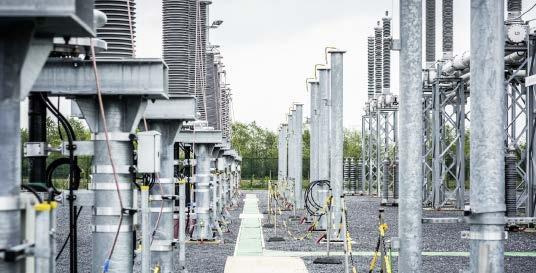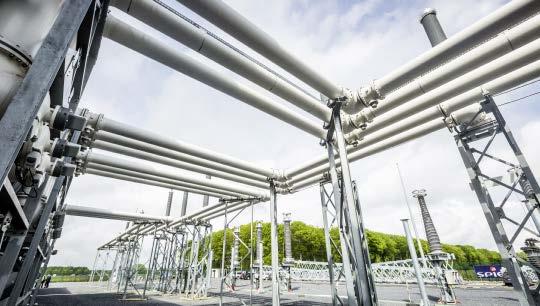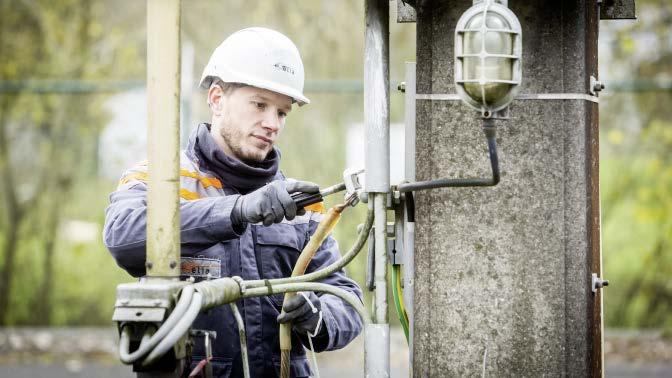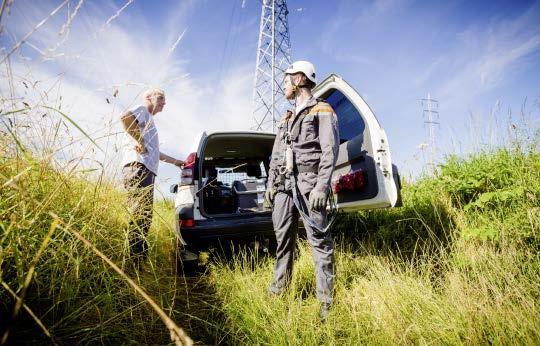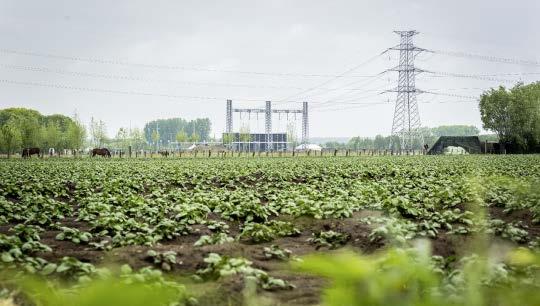
5 minute read
7.3.3. ANTARES model
HYDRO GENERATION
Three categories of hydro plants can be used: — Run-of-river (RoR) plants which are non-dispatchable and whose power depends only on hydrological inflows; — Storage plants which possesses a reservoir to defer the use of water and whose generation depends on inflows and economic data; — Pumped-storage station (PSP) whose power depends only on economic data. Run-of-river generation is considered as non-dispatchable and comes first in the merit order, alongside with wind and solar generation (as explained above). For storage plants, the annual or monthly inflows are first split into weekly amounts of energy. The use of this energy is then optimised over the week alongside the other dispatchable units. Each hydro unit can generate up to its maximum capacity. Pumped-storage plants have the possibility to pump water which will be stored and turbined later on. It is operated on a daily or weekly basis, depending on the size of its reservoir. ANTARES optimises the operation of ‘PSP’ alongside the other dispatchable units while making sure that the amount of energy stored (taking into account the efficiency ratio of the ‘PSP’) equals the amount of energy generated during the day/week.
DEMAND RESPONSE
One way of modelling demand response in the tool is by using very expensive generation units. Those will only be activated when prices are very high (and therefore after all available generation capacity is dispatched). This allows replicating the impact of market response as considered in this study. Activations per day and week can be set on this capacity.
The market simulator used in the scope of this study is ANTARES11, a sequential ‘Monte-Carlo’ multi-area simulator developed by RTE whose purpose is to assess generation adequacy problems and economic efficiency issues. This power system analysis software is characterised by these following specifications: — representation of several interconnected power systems through simplified equivalent models. The European electrical network can be modelled with up to a few hundred of region-sized or country-sized nodes, tied together by edges whose characteristics summarise those of the underlying physical components.; — sequential simulation with a time span of one year and a time resolution of one hour; — 8760 hourly time series based on historical/forecasted time series or on stochastic ANTARES generated times-series; — for hydro power, a definition of local heuristic water management strategies at monthly and annual scales; — a daily or weekly economic optimisation with hourly resolution This tool has been designed to address: 1. generation/load balance studies (adequacy); 2. economic assessment of generation projects; 3. economic assessment of transmission projects. A large number of possible future states can be extrapolated by working with historical or simulated time series, on which random samples are carried out in accordance with the ‘Monte-Carlo’ method. The main process behind ANTARES is summarised in Figure 131 [RTE-2].
The simulation scheme behind this process can be described in 4 steps:
ANTARES PROCESS (FIG. 131)
Time series Analyser Ready-made Time series Adequacy Results
Parameters Stochastic modelling Time series Generators
Generated Time series Monte-Carlo Scenario Builder Hydro Energy Manager Power schedule & UC* Optimiser
*UC - Unit Commitment Economy Results
Step 1: Creation of annual time series for each parameter
For each parameter, generation or retrieval of annual time series, with an hourly resolution is needed. The number of time series for each parameter is usually between 10 to 100 and can be increased if necessary.
Step 2: Creation of a ‘Monte-Carlo’ future state (year)
For each parameter, a random selection of the associated series is performed. This selection can also be made according to user-defined rules (probabilistic/deterministic mixes). The data selection process for each parameter provides an annual scenario called a ‘Monte-Carlo’ year (see Annex 7.3.1). This process is repeated several times (several hundred times) in order to obtain a set of ‘Monte-Carlo’ years representing a set of possible futures. NB: The spatial correlations and the correlation between the various renewable energy sources (wind, solar, hydroelectric) and the temperature are modelled. In other words, this means a selection of wind, solar, hydroelectric generationand thermo-sensitive consumption is performed for a given year, coming from one of the 34 historical weather scenarios.
Step 3: Hydro storage energy management
The aim of this step is to assess and provide to the optimiser weekly hydraulic energy volumes to generate from the different reservoirs of the system, for each week of the current ‘Monte-Carlo’ year. To perform this pre-allocation, the module breaks down annual and/or monthly hydro storage energy into weekly amounts, through a heuristic based on:
Net demand pattern (Load minus RES and mustrun generation) calculated from scenario data;
Hydro management policy parameters: to define how net demand is weighted for energy dispatching from year to months and from month to weeks;
Reservoir rule curves: to define minimal and maximal curves in order to constrain the dispatching of hydro energy and to define the maximal power variation with the variation of the reservoir level. Step 4: Power schedule and Unit Commitment (UC) optimiser
Two optimisation issues can be addressed in this process: adequacy or economy. The adequacy study analyses if there is enough available generation power, following the given state of the system, to meet the demand, whatever the prices or costs involved. In other words, no market modelling is needed since the function that has to be minimised is the amount of load that has to be shed in the whole interconnected system. The economy study requires a market modelling in order to determine which plants are delivering power at a given time. This process is performed through the economic dispatch method where the aim is to minimise the operating cost of the overall system by considering classically a ‘perfect market’ competition (market bids are based on short-term marginal costs).
The ANTARES ‘economy’ mode aims to find the optimal economic dispatch of each hydro and thermal unit, in other words, the one that minimises the total system costs taking into account generation constraints and possible energy exchanges.
The model is used in many European projects and national assessments: — the PLEF adequacy study [ENT-6]; — the TwenTies project [TWT-1]; — e-Highway2050 [EHW-1]; — ENTSO-E’s TYNDP [ENT-3]; — RTE French Generation Adequacy Report [RTE-1].

